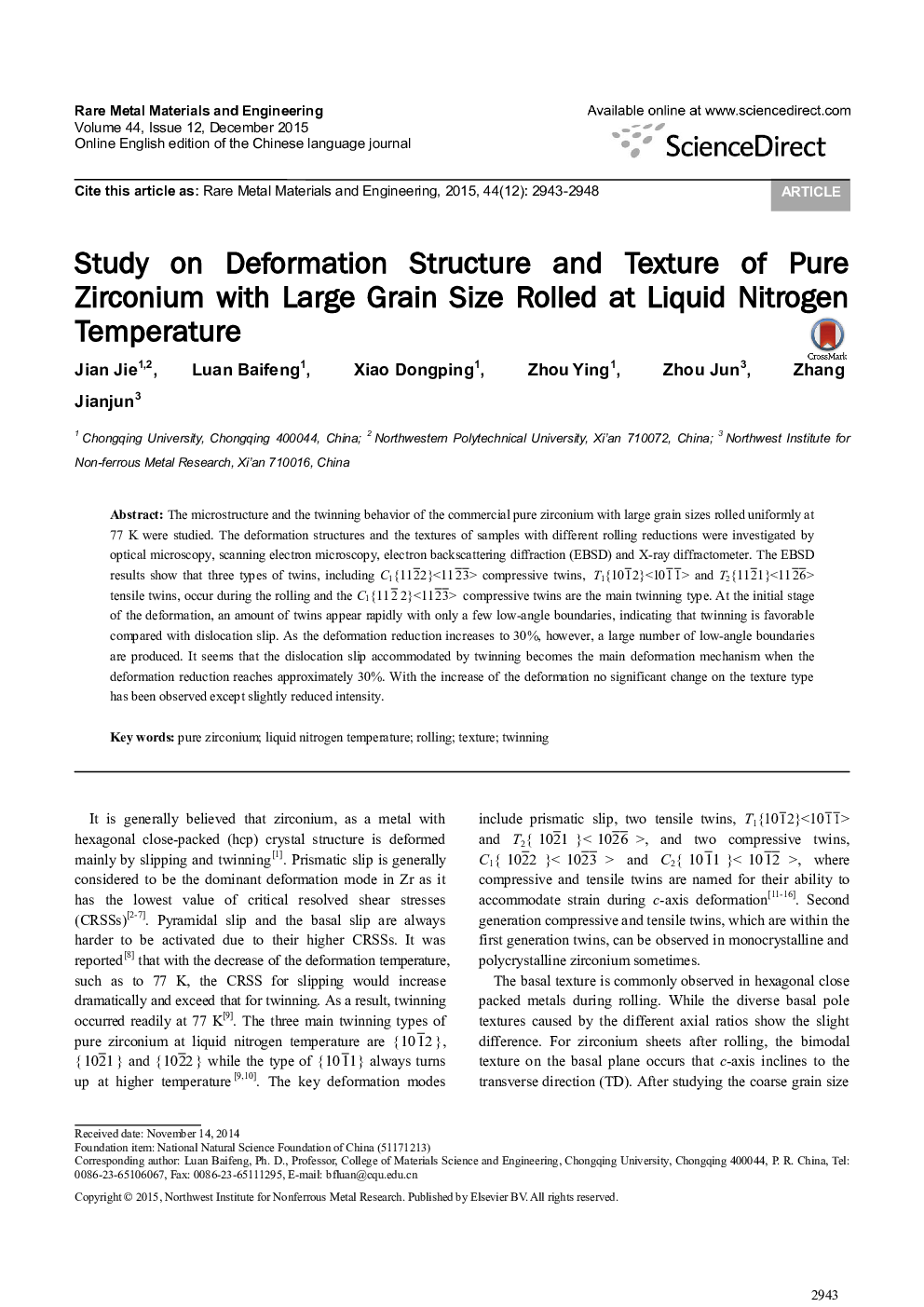| Article ID | Journal | Published Year | Pages | File Type |
|---|---|---|---|---|
| 814626 | Rare Metal Materials and Engineering | 2015 | 6 Pages |
The microstructure and the twinning behavior of the commercial pure zirconium with large grain sizes rolled uniformly at 77 K were studied. The deformation structures and the textures of samples with different rolling reductions were investigated by optical microscopy, scanning electron microscopy, electron backscattering diffraction (EBSD) and X-ray diffractometer. The EBSD results show that three types of twins, including C1{112}>11< compressive twins, T1{102}>10< and T2{111}>11< tensile twins, occur during the rolling and the C1{112}>11< compressive twins are the main twinning type. At the initial stage of the deformation, an amount of twins appear rapidly with only a few low-angle boundaries, indicating that twinning is favorable compared with dislocation slip. As the deformation reduction increases to 30%, however, a large number of low-angle boundaries are produced. It seems that the dislocation slip accommodated by twinning becomes the main deformation mechanism when the deformation reduction reaches approximately 30%. With the increase of the deformation no significant change on the texture type has been observed except slightly reduced intensity.
